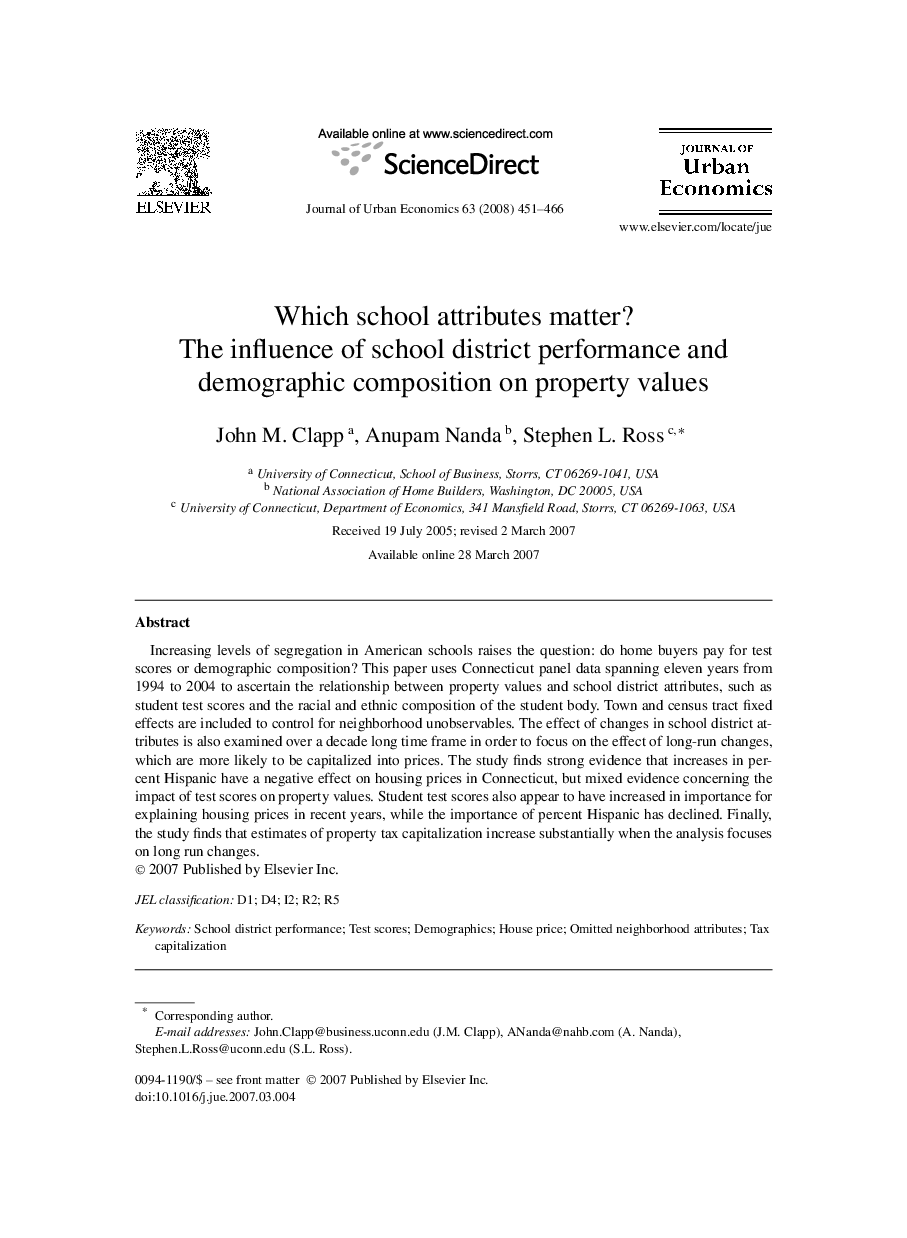| Article ID | Journal | Published Year | Pages | File Type |
|---|---|---|---|---|
| 971402 | Journal of Urban Economics | 2008 | 16 Pages |
Increasing levels of segregation in American schools raises the question: do home buyers pay for test scores or demographic composition? This paper uses Connecticut panel data spanning eleven years from 1994 to 2004 to ascertain the relationship between property values and school district attributes, such as student test scores and the racial and ethnic composition of the student body. Town and census tract fixed effects are included to control for neighborhood unobservables. The effect of changes in school district attributes is also examined over a decade long time frame in order to focus on the effect of long-run changes, which are more likely to be capitalized into prices. The study finds strong evidence that increases in percent Hispanic have a negative effect on housing prices in Connecticut, but mixed evidence concerning the impact of test scores on property values. Student test scores also appear to have increased in importance for explaining housing prices in recent years, while the importance of percent Hispanic has declined. Finally, the study finds that estimates of property tax capitalization increase substantially when the analysis focuses on long run changes.
